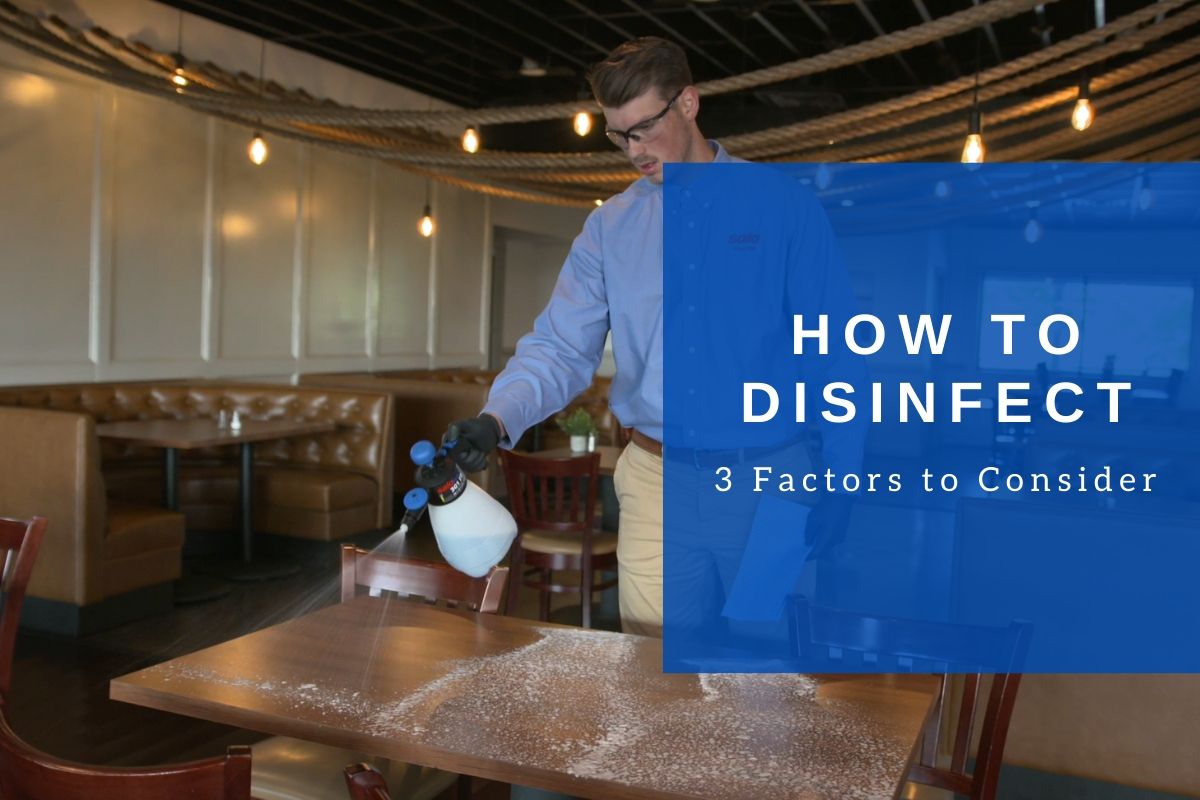
Coronavirus has made cleaning and disinfection more important than ever before. Many individuals and businesses were caught off guard by the rapid spread of COVID-19, resulting in a sudden and significant demand for cleaning chemicals and equipment. The rush to find the most effective tools—tools engineered to deploy swift and effective disinfection—left little time to consider what it means to disinfect properly.
Disinfection Has Always Been Important
Cleaning and disinfection have always played a critical role in public health. Before the coronavirus, facilities were cleaned daily and disinfected when the threat of an infectious disease was imminent. Cleaning is not done for aesthetic purposes, although a clean environment can improve a facility’s appearance. Cleaning is a part of protecting public health and is the necessary first step before disinfection.
Disinfection often refers to the process of killing pathogens on a surface. Disinfection seems simple to many, comprised of two steps: applying the disinfectant to a surface and then wiping it off. The two-step disinfection process isn’t accurate. There are many small but crucial factors in the disinfection process.
What To Consider When Disinfecting
As we mentioned earlier, several small and seemingly inconsequential factors are necessary for achieving proper disinfection, but what are those crucial factors?
Did You Choose an EPA Approved Disinfectant?
The first factor to consider is choosing an EPA-approved disinfectant. The EPA has a whole process for determining whether a disinfectant does what it advertises.
These EPA-approved disinfectants are only as effective as the instructions on the label. The instructions are what the EPA follows to test the efficacy of disinfectants, and the instructions provide the necessary steps for a disinfectant to hit its kill claims.
The EPA doesn’t give out a blanket approval. They test the disinfectant based on specific tools, on specific surfaces, and leave products on a surface for a duration of time—all these steps are meant for the consumer to replicate.
What Surface is It Meant to Disinfect?
Not all disinfectants are meant to disinfect all surfaces. The directions on a disinfectant usually dictate the intended surface. For example, a product might only disinfect hard non-porous surfaces. Hard non-porous surfaces include any metal, glass, and non-porous plastic, meaning it can’t be laundered like porous surfaces, such as carpet or linens.
Are You Applying the Chemical with the Correct Tools?
The instructions on disinfectants also dictate the type of tools to apply the product to a surface. A disinfectant might specifically require that it is applied with a cloth, mop, sponge, or sprayer. Applying disinfectant with tools not listed on a disinfectant’s directions deviates from what the EPA has deemed as safe and effective. In other words, the disinfectant may be less effective when applied with the incorrect tools.
The Disinfection Process
The directions will also tell the user how long to leave a disinfectant wet on a surface to sanitize or disinfect it. Depending on the user’s goal, whether that’s sanitation or disinfection, careful attention should be paid to the directions to achieve the proper dwell times for sanitation or disinfection. Before any sanitation or disinfection occurs, the surface should be cleaned of dirt and debris.
Following the instructions, including using the specified tools, maximizes the efficacy of a disinfectant.
Featured Product: Solo’s CLEANLine One-Hand Sprayers
Backed by over 70 years of spray and misting technology experience, Solo’s CLEANLine one-hand sprayers are durable, affordable, and reliable. CLEANLine comes with two options to fit perfectly into cleaning and disinfecting strategies using acidic or alkaline solutions.
CLEANLine One-Hand Sprayers
- 1.25-liter (301 models) and 2-liter capacities (302 models) with 2″ opening allows for easy filling and cleaning
- Quick and efficient pressurization up to 45 psi
- High-quality, chemical-resistant flat spray nozzle provides even distribution of chemical solution
- Viton® seals throughout for chemical solutions that are 1-7 pH in 301-A, 302-A models
- EPDM seals throughout for chemical solutions that are 7-14 pH in 301-B, 302-B models
